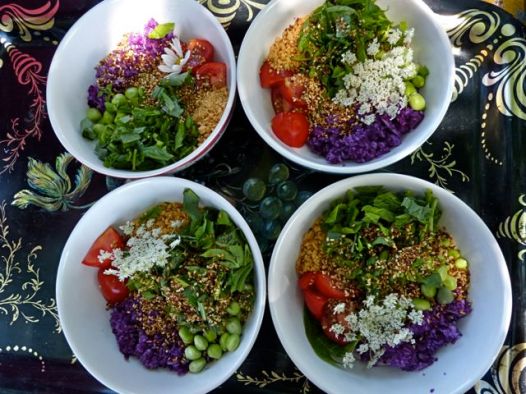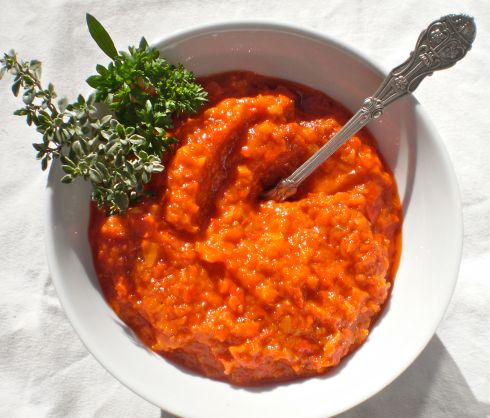A friend commented on the food I’d produced for a sunny summer lunch a couple of weeks ago, that her mother would never have eaten the salad, as it contained raw peas and weeds. My friends, however, were more daring, and ate the lot with gusto.
Salads are free-form food. Brought up in boring British kitchens of the 1960s and 1970s, where ‘salad’ was limp lettuce, soggy tomato slices, bits of cucumber and (in liberal circles) some grated carrot, I gradually realised that a salad could incorporate almost anything edible, from leaves to nuts, fish to fruit, spices, herbs and flowers. I went through a knickerbocker-glory phase of salad making, with layer upon layer of exciting ingredients in a huge bowl, delighting in the planning of it. But these concoctions took forever to produce, so these days I’ve scaled back a bit.
However, I now live amongst organic wildflower meadows, 1,000 metres up in the mountains, and my lawn is full of free and delicious greenery which gives me more nutrition than any shop-bought veg (including curly kale). What many call ‘weeds’, I call lunch. These are plants common to British gardens, so frustrated gardeners fed up of the unwanted leafy squatters in the veg patch: embrace them. Eat them. Ribwort and broad-leaved plantain, Fat Hen, wild carrot, Good King Henry, dandelion, chicory, caraway, chickweed, purslane, ox-eye daisy, smooth sow thistle, nettles, and the bane of gardeners, ground elder: all add texture and flavour to mild lettuce leaves or wilted spinach. Raw or steamed for 30 seconds, these are tasty, healthy and free-of-charge additions to your menu.
Back to salads. We know now that the more colourful the food we eat, the greater the health gains. Fruit, salads and veg come in the full spectrum of hues, and every colour brings different benefits. Raw is almost always healthier than cooked, so salads are the optimum eats.
So be bold. Experiment with different combinations. These bowls contain little heaps of: red cabbage (vivid purple when grated), tomatoes, crushed peanuts, peas (raw) from my garden, toasted sesame seeds, wild leaves (see list above), and spring onions. Topped with a wild carrot flower, and dressed with olive oil and a choice of lime juice or balsamic vinegar, they are filling, satisfying, pretty and delicious. Cheap, too, and easy – nothing clever required. Have a go.








